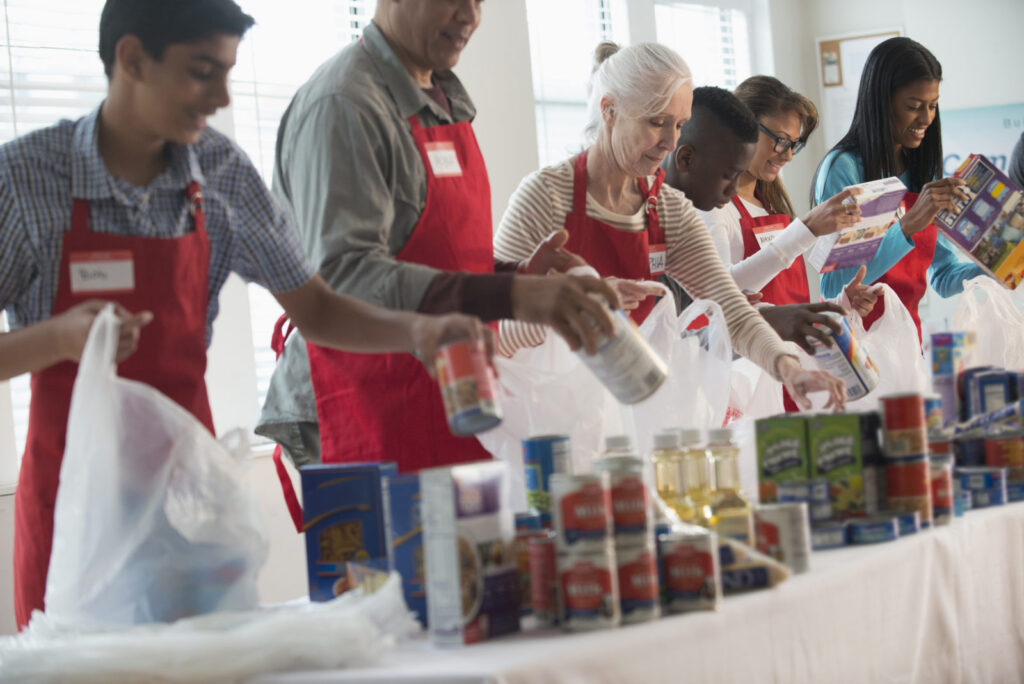
Where an individual lives, what they eat and the resources at their disposal have a greater influence on their health than one might think. Together, these things are called social determinants of health (SDOH), and they can dramatically affect an individual’s health and well-being. In fact, they are frequently a better predictor of health outcomes than either healthcare access or quality alone.
Addressing SDOH concerns improves health outcomes for entire communities, so there is increasing interest in mobilizing programs to do just that in neighborhoods across the nation. Healthcare facilities, doctors, nurses and even allied health professionals are shifting their focus to screening patients for SDOH. While this heightened awareness is helping, healthcare facilities and their staff can’t carry this burden alone—and, thankfully, they don’t have to.
Community partners are a great resource for SDOH programming and interventions. Here’s how healthcare organizations can make the most of community partnerships to improve the health of their patient populations and communities.
4 Ways Health Organizations Can Address SDOH and Improve Health Outcomes With Community Partners
Improving the health of a community requires cooperation from many different stakeholders. Healthcare facilities take care of acute health needs, but they aren’t equipped to address patients’ individual SDOH on their own. But with the help of community partners, healthcare facilities can influence nearly every aspect of SDOH.
1. Refer patients to housing, food security and other SDOH programs.
The first step to addressing SDOH concerns in a community is developing a process for identifying patients who need these services. Many times, this falls on healthcare professionals. They may use intake forms that incorporate SDOH screening, data points that provide insights into an individual’s social needs, and information about common SDOH issues in their communities to gain a better understanding of their patient population.
Once a patient’s SDOH information is collected, it won’t make a difference if no one does anything with it. So it’s essential that healthcare professionals also know about and have easy access to national and community-based organizations that can help address their patients’ social needs. Using digital collaboration tools and forming community partnerships to accomplish this can make all the difference.
Digital Collaboration Tools
Care management programs that leverage robust data and digital collaboration tools allow for deeper, more personal insights into SDOH. Look for one that includes:
- Integrated campaign management tools that make it easier to share essential healthcare education, reminders about preventive care, and social services information.
- A community resource network management tool that brings national and community-based organizations together with a healthcare organization’s existing network of providers so it’s fast and easy to identify appropriate resources to address patients’ social care needs.
- A streamlined closed looped referral module so care teams are well equipped to guide patients to services that can help and ensure those services were delivered.
Community Partnerships
Many healthcare organizations and health insurance companies develop community partnerships to assist patients with their SDOH needs.
Community partners participate in many activities to provide SDOH support to the healthcare organizations they partner with, including:
- Facilitating housing programs for homeless people
- Hosting food banks for those with food insecurity
- Running substance abuse programs
- Promoting anti-violence programs
Programs like these put community members in a great position to address their SDOH, as well as their overall health.
2. Host events with community partners.
Community partnerships can also be more collaborative through events, including galas and fundraisers, to support nonprofit organizations that impact SDOH in some way.
Other events focus on recognizing people and organizations that provide the most support to SDOH programs. Fundraising dinners, silent auctions and even awards galas are great examples of stakeholder-centric community events.
Healthcare organizations can also team up with community partners for events that focus on the community members who benefit most from SDOH programs. Since SDOH include socioeconomic status, exposure to violence and other factors that aren’t explicitly health related, a wide variety of stakeholders host these sorts of community events, which can take many forms:
- Job fairs
- Resume workshops
- Campaigns to end violence
- Blood drives
- Drunk and distracted driving programs for young drivers
And while stand-alone events developed with SDOH in mind are great, there are many other ways for community partners to get involved.
3. Collaborate with community partners to provide health education programs.
Teaching people about their health and SDOH is one of the more influential options for community partnerships. Teaming up with organizations that have funds to support these activities is a great way to address SDOH in the community.
Ongoing health education series on managing diabetes, heart health and other common health issues are great examples of this arrangement. Health education programs can also include more area-specific topics, like substance abuse programs in communities hard hit by the opioid epidemic or suicide prevention and bullying programs at local schools and community centers.
4. Be present or provide support for large community events.
Part of developing great community partnerships is providing support to events hosted in the community. There are plenty of seasonal opportunities to join in celebrating holidays, fairs, sporting events and other community-centric events hosted by local government, schools and small businesses.
A healthcare organization’s presence not only allows them to intervene in a health emergency, but also helps them build a positive reputation and trust in the community. That priceless trust gives healthcare organizations a greater chance at engaging with community members and other stakeholders in SDOH-focused endeavors.
Success of SDOH Interventions Depends on Community Partnerships
Healthcare organizations can’t do it all on their own. Workforce shortages make it difficult for them to address acute healthcare needs, so managing full-cycle SDOH programs in the community without external support isn’t possible. Relying on community partnerships helps increase the success of these programs while also sharing the responsibility—in terms of both funding and facilitating interventions.
Community partners are simply stakeholders with a vested interest in the health and wellness of their community. They aren’t limited to health-focused organizations. Healthcare organizations can partner with small businesses, schools, community centers, local government offices, law enforcement and more to provide SDOH programs to everyone in their community, from elementary schoolers to the elderly and those with complex health conditions.
The partnership goes both ways, and healthcare organizations should be prepared not only to receive support with SDOH programs, but also to lend support to partners in an effort to build trust in the community. The health and success of the community and SDOH-focused health interventions depend on it.



About The Author: Medecision
Medecision is a leader in cloud-based, data-powered healthcare solutions, enabling risk-bearing entities to achieve improved health outcomes, optimized medical costs, reduced administrative costs, and personalized engagement. Our Aerial platform supports over 10% of the U.S. population, marking a significant milestone in advancing healthcare efficiency and effectiveness.
More posts by Medecision